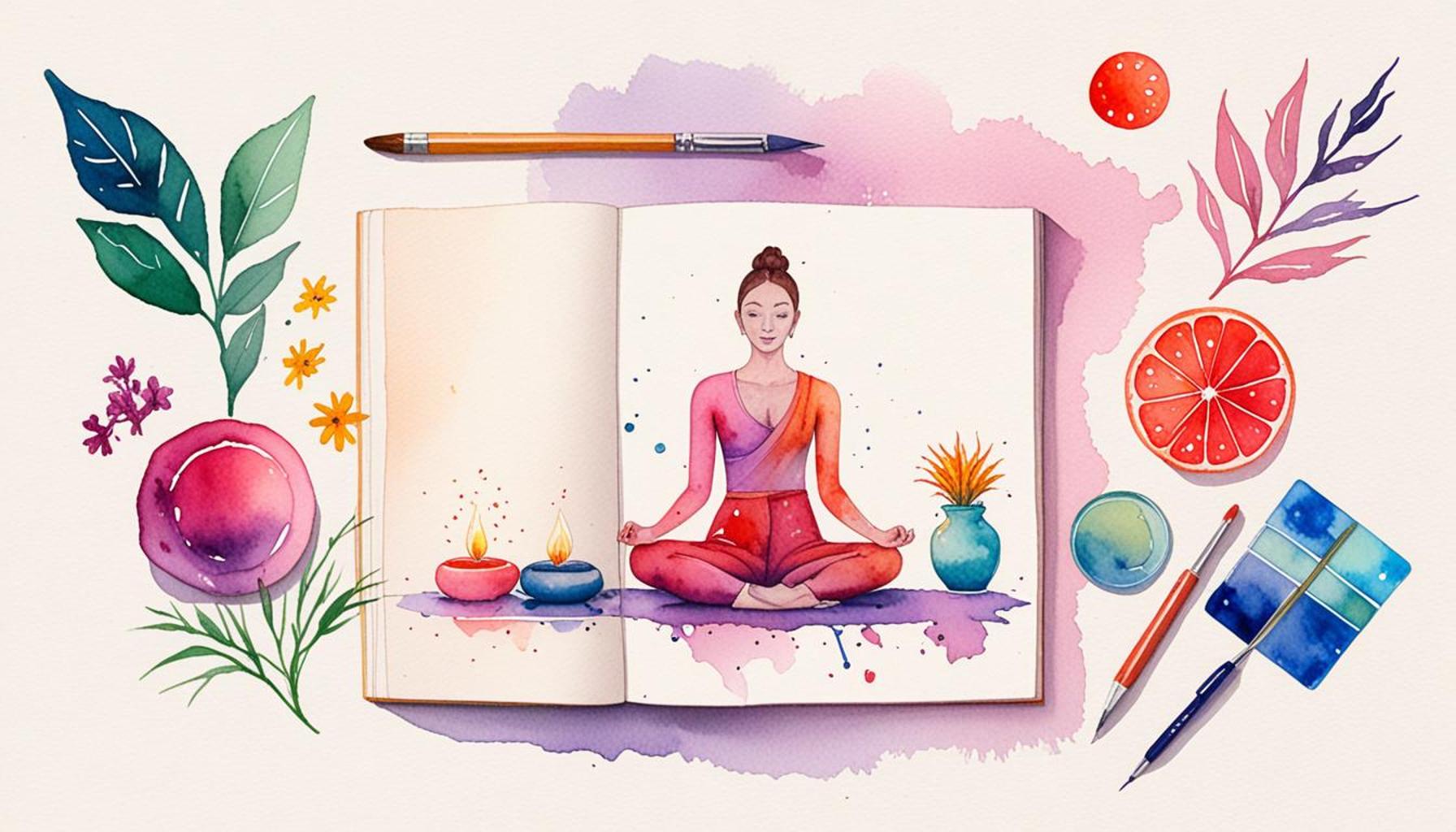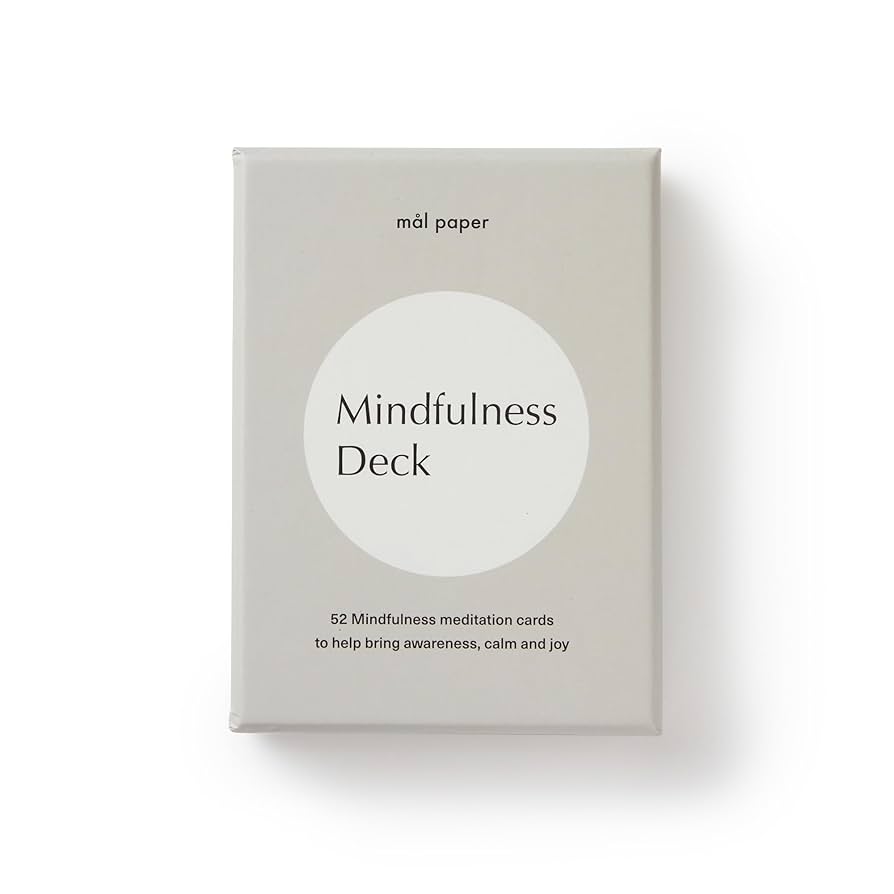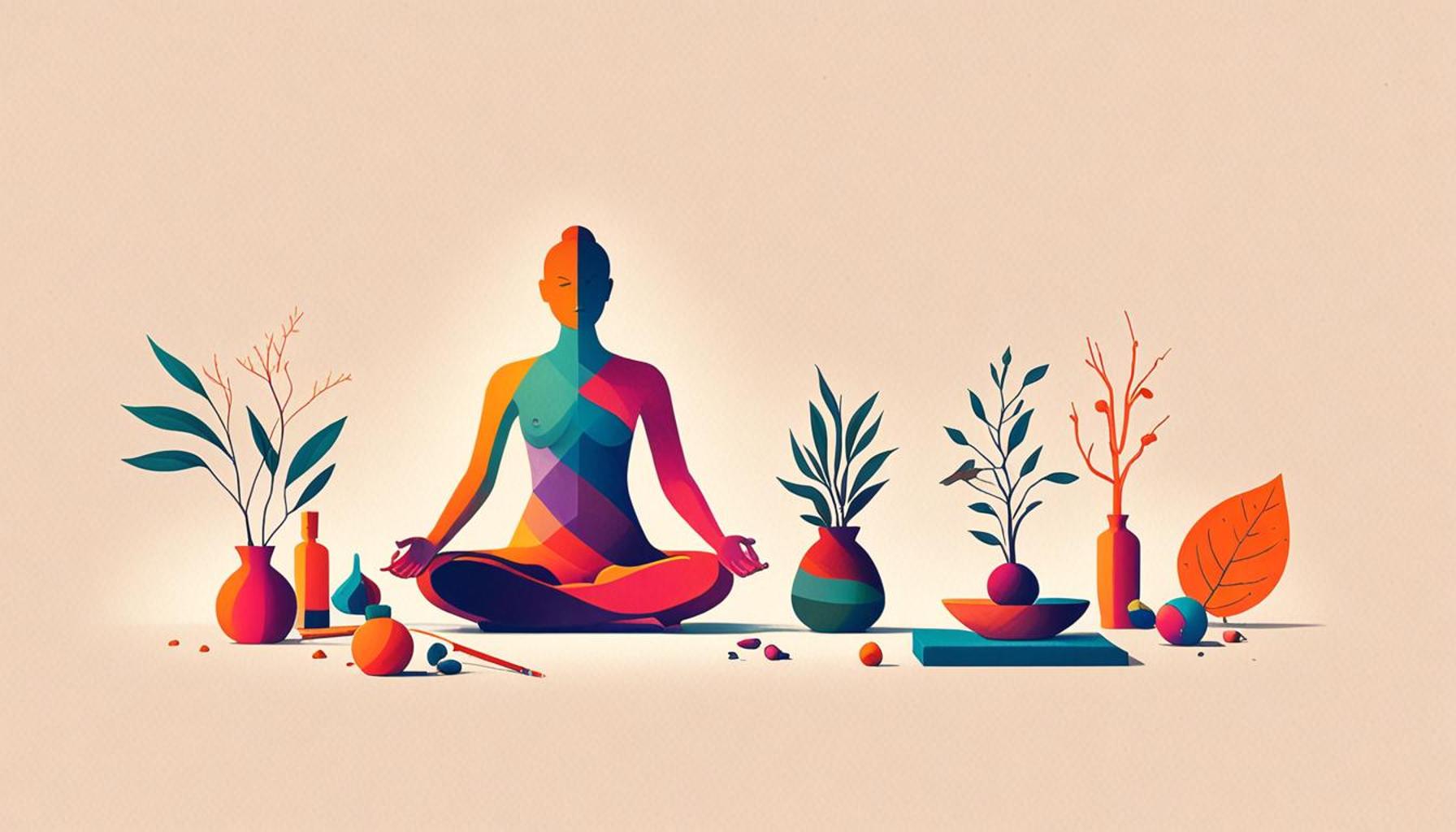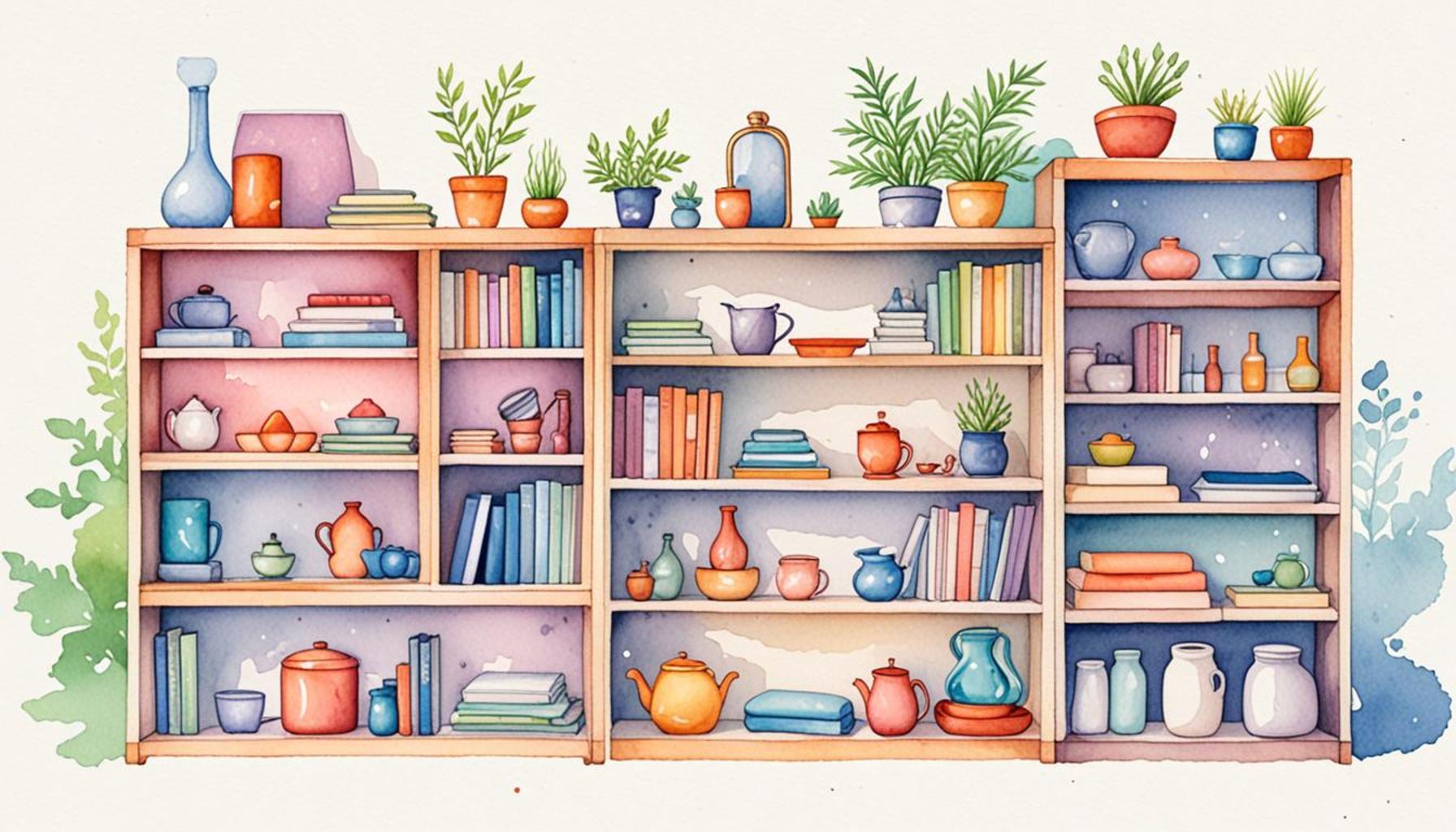Daily Mindfulness Rituals: Integrating Minimalism and Well-Being into Your Routine

Embracing Mindfulness and Minimalism
In a society that seems to demand constant attention and engagement, finding a balance between responsibilities and personal well-being can be a Herculean task. Amidst the whirlwind of busy schedules and information overload, daily mindfulness rituals stand out as a sanctuary of peace and clarity. When combined with the principles of minimalism, these practices not only enhance mental health but also nurture a sense of calm that can positively impact every aspect of daily life.
Why Mindfulness Matters
Incorporating mindfulness into everyday life provides a multitude of benefits that extend far beyond relaxation. Research has consistently shown that mindfulness practices can lead to:
- Reduced Stress: By encouraging a focused awareness of the present moment, mindfulness can significantly lower stress levels. According to a study published in the Journal of Happiness Studies, regular mindfulness meditation can activate the body’s relaxation response, effectively diminishing symptoms of anxiety and tension.
- Enhanced Focus: Mindfulness practices such as meditation have been linked to improved concentration. This heightened focus enables better decision-making, creativity, and even problem-solving abilities, which are crucial skills in both personal and professional spheres.
- Better Physical Health: Engaging in mindfulness can lead to notable health improvements, including lower blood pressure and better heart health. Studies suggest that mindfulness can enhance the body’s immune response and reduce inflammation, paving the way for healthier living.
Minimalism as a Tool for Clarity
Minimalism involves more than just decluttering physical spaces; it promotes intentional living by prioritizing what genuinely matters. Understanding and embracing minimalism can have several transformative effects:
- Simplified Space: A clean and organized environment tends to foster clearer thinking. Minimalism encourages the removal of unnecessary items, resulting in spaces that invite peace and creativity. Many Americans have discovered that a clutter-free home contributes significantly to overall well-being.
- Eased Decision-Making: In a world brimming with choices, it’s easy to feel overwhelmed. Minimalism helps streamline decision-making processes by reducing the number of options, making life’s demands feel less burdensome.
- Improved Focus on Values: By prioritizing quality over quantity, minimalism urges individuals to reflect on their core values. This shift often leads to deeper satisfaction in relationships and personal achievements.
By marrying the disciplines of mindfulness and minimalism, individuals can cultivate a lifestyle that emphasizes well-being and fulfillment. Integrating daily mindfulness rituals, such as a few minutes of deep breathing each morning or mindful eating practices, creates a foundation for clarity in a chaotic world. The result? A life characterized by intention, clarity, and an unmistakable sense of serenity. As you explore these practices, you may discover profound changes not only in your daily routines but in how you perceive and engage with the world around you.
DISCOVER: Click here to boost your productivity

Creating Mindful Moments
To harness the power of mindfulness and minimalism, it is essential to carve out specific moments in your day dedicated to these practices. By doing so, you create a structured routine that fosters comprehensive well-being. Here are a few simple yet profound daily mindfulness rituals that can seamlessly integrate into even the busiest of lifestyles:
Mindful Mornings
Starting your day on a positive and mindful note can significantly influence your mood and productivity. Here are some practices to consider:
- Gratitude Journaling: Take a few minutes each morning to jot down three things you’re grateful for. Research indicates that practicing gratitude can shift focus away from negative thoughts and enhance overall happiness.
- Breathing Exercises: Engage in deep breathing for five minutes. Inhale deeply for four counts, hold for four counts, and exhale slowly for four counts. This practice engages the parasympathetic nervous system, initiating relaxation and clarity.
- Mindful Movement: Whether it’s a stretch, yoga, or a short walk, incorporating movement with awareness can help awaken both the body and mind. It channels energy while fostering mindfulness in motion.
Conscious Consumption
Mindfulness isn’t confined to the mind; it extends to how we consume food and information. Mindful eating is a powerful aspect of this practice:
- Savoring Every Bite: Instead of rushing through meals, take time to enjoy the flavors and textures. Engaging your senses while eating can transform an ordinary meal into a delightful experience.
- Mindful Media Consumption: In a world flooded with information, it’s vital to be selective about what we consume. Consider setting limits on social media usage and actively choosing content that uplifts and educates.
- Decluttering Digital Spaces: Just as physical spaces can become cluttered, so can our digital environments. Regularly curate your emails, apps, and files to create a streamlined digital life that fosters clarity.
Evening Reflections
Closing your day with a mindful evening ritual not only helps in winding down but also prepares your mind for a restful sleep. Try incorporating:
- Mindful Meditation: A short meditation session before bed can calm racing thoughts. Utilization of guided meditations can provide structure and ease.
- Reflective Journaling: Spend a few minutes reflecting on your day. Write down what went well and what you could improve on. This practice cultivates self-awareness and personal growth.
- Screen-Free Time: Creating a buffer between screen time and sleep by designating the last hour before bedtime for reading or quiet reflection can improve sleep quality and enhance relaxation.
By adopting these daily mindfulness rituals, you are not merely adding to your to-do list; you are intentionally crafting spaces for peace and reflection. This union of mindfulness and minimalism can sponsor a holistic view of well-being, making every day a chance to rediscover clarity amidst distractions.
| Advantages | Description |
|---|---|
| Enhanced Focus | Minimizing distractions helps improve concentration, leading to a more productive day. |
| Stress Reduction | Regular mindfulness practices cultivate a sense of calm, easing daily stresses and anxieties. |
Integrating minimalism into your “Daily Mindfulness Rituals” isn’t just a trend; it’s a transformative approach that pairs *well-being* with intentional living. By simplifying your environment and practices, you can create a sacred space that fosters clarity and tranquility. The connection between minimalism and mindfulness lies in the reduction of unnecessary clutter, both physical and mental, which, in turn, allows for deeper engagement with your surroundings and activities. Consider daily rituals like journaling or meditation, where focusing on a single thought or feeling can lead to profound insights and emotional balance. Regularly practicing these rituals can unveil a more profound understanding of oneself and encourage a *harmonious lifestyle*. The rhythm of mindfulness can also enhance your *decision-making skills*, enabling you to act with purpose and intentionality in your everyday activities. Moreover, small adjustments to your daily schedule, such as dedicating just 10 minutes for breathwork or gratitude reflection, can amplify your overall sense of well-being. With such practices woven into your routine, maintaining a minimalist mindset becomes second nature, nurturing both your mental and emotional health over time. Explore these methods to discover their full potential in enriching your life.
DISCOVER MORE: Click here to boost your productivity
Building a Mindful Environment
Our surroundings greatly influence our mental state, making it crucial to create an environment that supports mindfulness and minimalism. By thoughtfully organizing your physical and sensory spaces, you can cultivate an atmosphere conducive to well-being. Here are some effective strategies for creating a mindful environment:
Declutter Your Space
Physical clutter can lead to mental clutter, which detracts from your ability to focus and be present. Begin by assessing your living and working environments:
- Start Small: Tackle one area at a time, such as a desk, a drawer, or a room. This makes the process less overwhelming and allows you to appreciate the incremental changes.
- Keep What Adds Value: Use the “one in, one out” principle. For every new item you bring into your space, consider removing one. This helps maintain a minimalistic environment that reflects your values.
- Incorporate Nature: Adding plants or natural elements to your space can significantly uplift your mood and creativity. Studies show that exposure to nature enhances cognitive functioning and emotional well-being.
Create a Mindfulness Corner
Designate a specific area in your home as a mindfulness corner, a dedicated space where you can retreat to practice presence:
- Choose Comfortable Seating: A cozy chair or cushion encourages you to spend time in your mindfulness corner. Make it inviting, adding soft blankets or cushions to enhance comfort.
- Incorporate Calming Elements: Use scented candles, essential oils, or even a small fountain to create an atmosphere that promotes serenity. Certain scents, like lavender or eucalyptus, can evoke a sense of peace.
- Limit Distractions: Keep this space free of electronic devices and clutter. Limit visual distractions to enhance focus, making it easier to engage in meditation or mindfulness exercises.
Mindful Listening
Sound plays a powerful role in our emotional state, so being mindful of what we listen to can enhance our overall well-being:
- Curate a Mindful Playlist: Select music that calms or motivates you. Studies suggest that music can impact our emotions and even our productivity levels, making it a valuable tool for mindfulness.
- Practice Silence: Allocate specific times during your day for silence. The “noisy” world around us can drown out our inner voice and calmness, so intentionally creating moments of silence can promote mindfulness.
- Engage in Conscious Conversations: Be present during interactions with others. Practice active listening – being genuinely attentive can strengthen relationships and foster deeper connections.
Establishing a mindful environment not only influences your personal growth but also encourages those around you to consider similar practices. By embodying the principles of minimalism and mindfulness in your surroundings, you’ll immerse yourself in a nurturing atmosphere that promotes clarity, focus, and well-being.
DIVE DEEPER: Click here to discover more
Embracing Mindfulness and Minimalism for a Better Life
In our fast-paced world, the significance of daily mindfulness rituals cannot be overstated. By integrating minimalism into our routines, we create pathways toward improved well-being and a more fulfilling life. As we immerse ourselves in less clutter and intentional practices, we cultivate an enlightening approach to everyday experiences. Simplifying our surroundings and focusing on only what truly matters, not only alleviates anxiety but fosters a sense of peace and clarity.
Through actionable strategies such as creating a mindfulness corner and practicing mindful listening, we empower ourselves to engage in moments that enrich our mental health. The act of decluttering our environment serves as both a physical and emotional reset, encouraging us to live with purpose and intention. Furthermore, this journey often inspires those around us, fostering a collective culture of mindfulness.
As we’ve explored, adopting a minimalistic lifestyle in alignment with daily mindfulness practices offers a pathway to greater self-awareness and emotional resilience. The journey may begin with small, simple steps, but the ripple effect it creates can lead to profound transformations in our daily lives. So, take a moment to reflect on your environment, routines, and interactions—embracing mindfulness and minimalism might just lead you to a more satisfying and enriched existence.


